We all love a good cushion. Key to both the style of a room and that cosy feeling while sitting on your Swyft sofa with snacks and the TV remote in hand, no home would be the same without cushions scattered about the place. And, while pondering whether to go for animal print over pink ‘n’ frilly, or vintage over modern, is all part of the cushion-buying fun – and an easy way to spruce up a room – you also have to consider your choice of fabric.
The materials best suited to cushions in high-use areas will need to be more durable than the fabric of those cushions artistically arranged on your bed. Other upholstery fabrics are better choices for fancying up your outdoor space or for rooms like your kitchen, which may need a more hard-wearing choice of material.
Here’s our handy guide to the pros and cons of different fabrics, and the places in the home they are most recommended for.
Cotton & Linen

As with clothing, cotton is the one of the most popular choices for cushion fabrics. As a natural fibre, it’s kind to sensitive skin, as well as being hardwearing and washable. This makes it a good option for those hard-working cushions in the living room or open-plan kitchen-dining area. The most likely to be man-handled and thus the casualties of anything from kids smearing chocolate-y hands over them to (oops) a little Friday night wine spillage, just pop them in the washing machine, no bother.
Linen, also a cool and comfy natural fabric, is washable too and moisture resistant to boot – so much so that it can absorb 20% of dampness without even feeling wet.
Canvas
Canvas is the undisputed winner when it comes to the best fabric for outdoor use. A plain-woven fabric typically made from cotton blended with synthetic fibres, it’s the most durable, heavy-duty fabric out there. Perfect for keeping bottoms comfy on the garden furniture over the summer, while you indulge in a spot of over-grilled meat from the BBQ, an early evening glass of rosé or a cheeky beer in the sunshine, canvas should be your go-to choice for garden cushions. Sturdy, hard-wearing and easily washable, canvas is water resistant and sometimes even water-proof - which, with the unpredictable British weather regularly delivering the chance of drizzle, is most welcome.
Silk or Wool
There’s nothing that says ‘I have classy taste, folks’ quite like a spot of silk. A natural fibre and cool to the touch, it’s no great surprise that you have to pay the price for such decadence in your home. And as such, you’ll also have to look after it well. Keep your silk cushions for the best spots – in the bedroom or an area of your home that is more about aesthetic display than function. Arrange on a lesser-used, more ornamental sofa, or a stylish chair, rather than in a ‘high-traffic’ seating area like around the TV or fireplace.
Silk isn’t the easiest fabric to look after. Only machine wash if the label allows and, then, only on a delicate/silk cycle. If the cushion cover is suitable for hand-washing, use a gentle detergent for coloured fabrics, as these don’t contain bleaching agents. The water should be tepid at the most. Avoid the tumble dryer, but never hang silk cushion covers outside as the sunlight will yellow and weaken the fibres.
Wool, meanwhile, will bring a very different, more rustic feel to your interior scheme. And while it is a very safe, natural fabric to opt for – wool is both hypo-allergenic and flame retardant - the drawback is, again, in the cleaning, so best to avoid plumping (sorry) for wool cushions in areas where there’s a likelihood of spillages. Always follow the labels for cleaning advice, avoiding hot washes, using only mild detergent, and do spot cleaning where possible.
Leather
A statement fabric and a bold design choice that, like silk, isn’t a cheap decision but
Polyester & Nylon
Synthetic fibres can be excellent for cushion cover fabric because they’re hard-wearing, easily washable and they fade less than other fabrics with regular cleaning, so great for bold prints and strong colours. Polyester and nylon don’t crumple easily either, so can be pummelled and squashed like all well-loved cushions should be, without losing their shape. They’re also less absorbent than cotton, which means they’re less likely to stain. All-in-all, great options for high use areas like the kitchen, dining table and your main sofa area.
However, the fact that polyester and nylon are man-made could be a turn-off for some. Synthetic materials are non-biodegradable and the opposite of breathable fabrics like cotton and linen. And while this doesn’t matter so much as with clothing, they trap heat and sweat and aren’t going to be the coolest fabrics to sit on in the humid summer weather.
Combination Fibres

Combining different fabrics together in your choice of cushion covers has a myriad of benefits . A linen-cotton blend is a great option for durability – both fibres are highly breathable and absorb moisture, and the downside of linen – the crumpled look – is avoided in a cotton blend, thus meaning you won’t need to get the iron out (which is always welcome, let’s face it). Opt for this fibre combo for those cushions you’re most likely to be sitting on or hugging a lot.
Alternatively try poly cotton which, as the name would suggest, is a blend of cotton and polyester. Poly cotton is a perfect, highly durable purchase for a cushion cover because the fabric is stronger, doesn’t shrink or change shape and dries faster than 100% cotton. It will also be more colour-fast than cotton, but it won’t stick to your skin if you sit on it like 100% polyester would.
And then there is velvet, just like our beautiful Velvet Armchairs. While it was traditionally made from silk, velvet fabrics can be made from just about any fibre and are now most commonly made from synthetics like polyester, making them far more durable for your upholstery. Velvet can be sponge-washed, vacuumed and brushed (but avoid scrubbing or twisting as you could damage the material). So, as sumptuous and stylish as velvet cushions may look, they are also more practical than you’d think.
Now that you’ve decided on your fabric comes the fun bit. Have a look at our sofa cushions guide for everything you need to know about colour, texture, patterns and matching them to your sofa.
You may also want to think about how to arrange a sofa to make the best use of your living space.
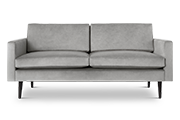
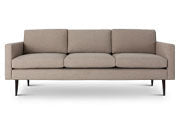 Model 01
Model 01
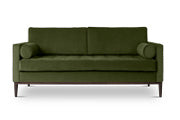 Model 02
Model 02
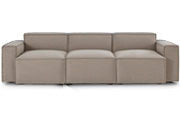 Model 03
Model 03
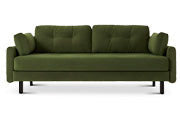 Model 04
Model 04
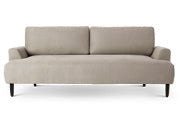 Model 05
Model 05
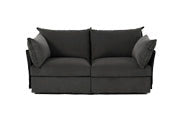 Model 06
Model 06
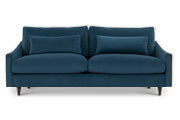 Model 07
Model 07
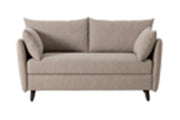 Model 08
Model 08
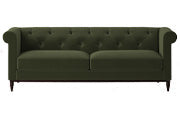 Model 09
Model 09
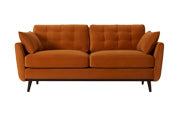 Model 10
Model 10
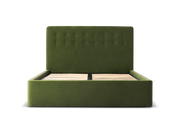 Bed 01
Bed 01
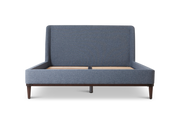 Bed 02
Bed 02
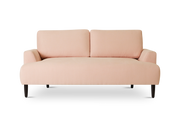
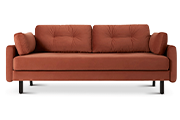
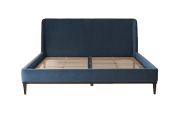
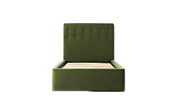 Single
Single
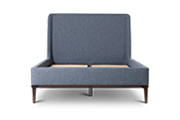 Double
Double
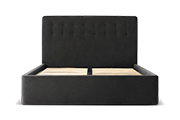 King
King
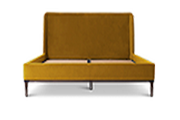 Super King
Super King
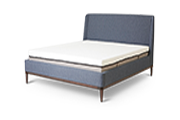 Mattresses
Mattresses
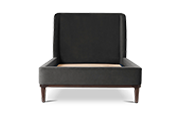 All Beds
All Beds
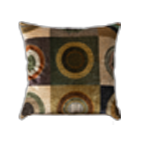
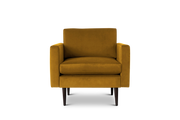
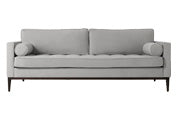
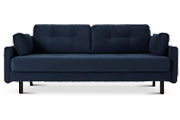




Want more? Discover interior inspiration and exclusive updates
Sign up to our weekly newsletter for more like this.